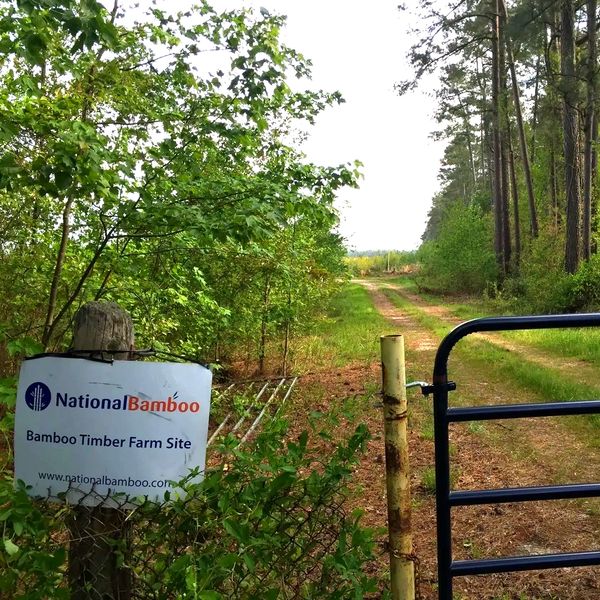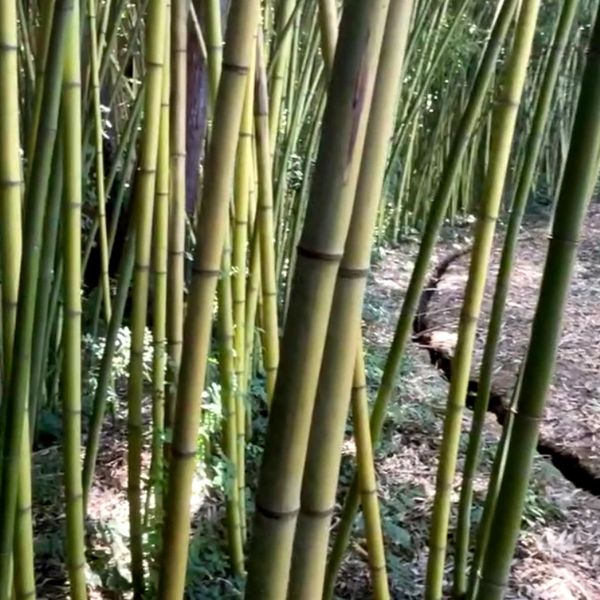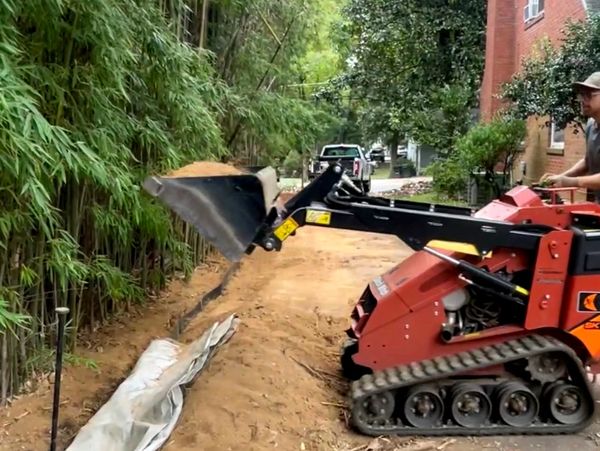Bamboo is Aggressive, but not Invasive

The Truth About Bamboo
The perception of bamboo, in general, as an invasive species warrants a more balanced examination. First off, there are over 1,400 species of Bamboo (both running and clumping varities) and is native to every continent (including North America) except Europe. Bamboo is classified as a giant grass, but unlike others in the Poacea family, our bamboo is sterile and the next flower cycle will be in another 100+ years. For a species to be truly invasive in an ecosystem, it has to be able to spread quickly over great distances, normally achieved by spreading seeds, which is not the case for bamboo. Running Bamboo is only expansive on a small localized scale because viable spreading only occurs from the root system —a manageable characteristic as it does not grow very deep.
The notion of invasiveness revolves around the propensity of non-native species to displace native flora widely within a native ecosystem, thereby disrupting its ecological stability. However, it's essential to recognize that this concern becomes virtually irrelevant in the context of deliberate agroforestry operations. These operations focus on cultivating specific genetic timber bamboo varieties on rural, degraded lands, aligning with the intention to restore these areas through photosynthesis and soil building. The federal definition of an invasive species hinges on the likelihood of causing economic, environmental, or human health harm, which simply does not apply to our model of bamboo agroforestry. It does apply to those who plant running bamboo near their house, this is ill-advised and gives all bamboo a bad name. Key takeaways: 1. Don't generalize Bamboo (be species specific), 2. There is native bamboo in the US (but it's not commercially relevant), 2. Running bamboo is aggressive grower, not invasive (if properly managed), 3. Timber Bamboo is recognized as a cash crop by the USDA (the global bamboo market is $60B), 4. Bamboo has environmental benefits if planted in degraded or marginal lands (and properly managed). 5. Timber bamboo is a sustainable wood alternative to expensive Southern hardwood fiber.

From Our Perspective
Large-scale giant timber bamboo agroforestry in the USA offers a multifaceted and compelling opportunity. It promises to be economically beneficial by fostering domestic investments in industrial production and manufacturing, creating jobs and generating revenue.
Furthermore, it has the potential to significantly bolster environmental sustainability by aiding in carbon draw-down and climate mitigation, while also serving as an effective means of remediating degraded lands.
Additionally, the abundant bio-pharmaceutical resources found in bamboo provide opportunities for breakthroughs in human health, and bamboo's versatility as a source of natural materials can enhance indoor environments, contributing to improved living spaces.
Embracing large-scale bamboo agroforestry offers a holistic solution with substantial economic, environmental, and health-related advantages for American landowners, communities, consumers, and investors.

Bamboo in Urban Environments
Bamboo gets a bad name because of irresponsible planting on property lines. At National Bamboo, we feel that timber bamboo is best utilized in rural areas, helping to regenerate degraded lands, and demands large acreage and equipment to manage it efficiently. Our bamboo produces 20 tons of biomass per year, which is overwhelming for most urban environments/landowners. In an urban setting, timber bamboos can also upheave pavement, or even home foundations if not properly contained. They need annual maintenance to avoid it getting out of hand. Please visit https://www.bamboo.org/ for a list of reputable bamboo landscape vendors and select the best species for your needs.
Containment - Simple and Effective

Air Pruning Trench
Air pruning trenches (image above), are low maintenance and highly effective over time. The trench is dug at 20 inches deep and will backfill in some over time. Most loamy soils in the Southeastern US are great at keeping their form and not collapsing in or eroding. Runner rhizomes tend to only be in the top 2 - 6 inches of soil and when the apex growth tip of a rhizome hits the vertical wall of an air pruning trench, it can easily be removed, redirecting the lateral growth in another direction, such as back toward the center of the grove. This method effectively ends the spread of the bamboo into an unwanted area long term. There are a handful bamboo removal and containment companies out there, likely one in your region that can solve the problem once and for all with an air pruning trench. Please visit https://www.bamboo.org/ for a list of reputable bamboo landscape vendors.

Trench Maintenance
When bamboo has been cut down on the unwanted side of the trench, it will try to regenerate from the rhizome during the Spring and Summer seasons, sprouting up small "whips" or thin bushy new-growth. This must be knocked back in the Summer and Fall, over 2-3 years, before all energy reserves become exhausted and the rhizomes will die and rot in the ground because they are severed from the mother plant and don't have a chance to photosynthesize. So, it is best to install a pruning trench before bamboo is given the chance to spread to an unwanted area of land.

Pick and Eat Shoots
Reviews
This website uses cookies.
We use cookies to analyze website traffic and optimize your website experience. By accepting our use of cookies, your data will be aggregated with all other user data.


